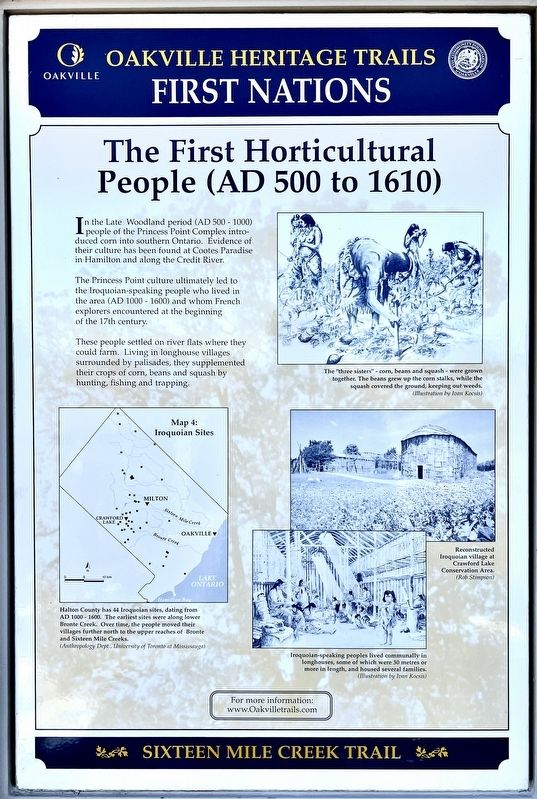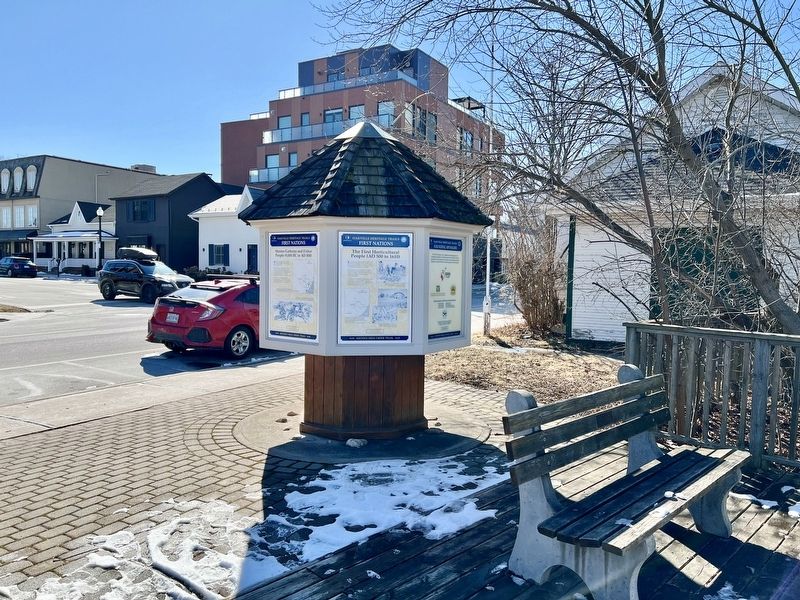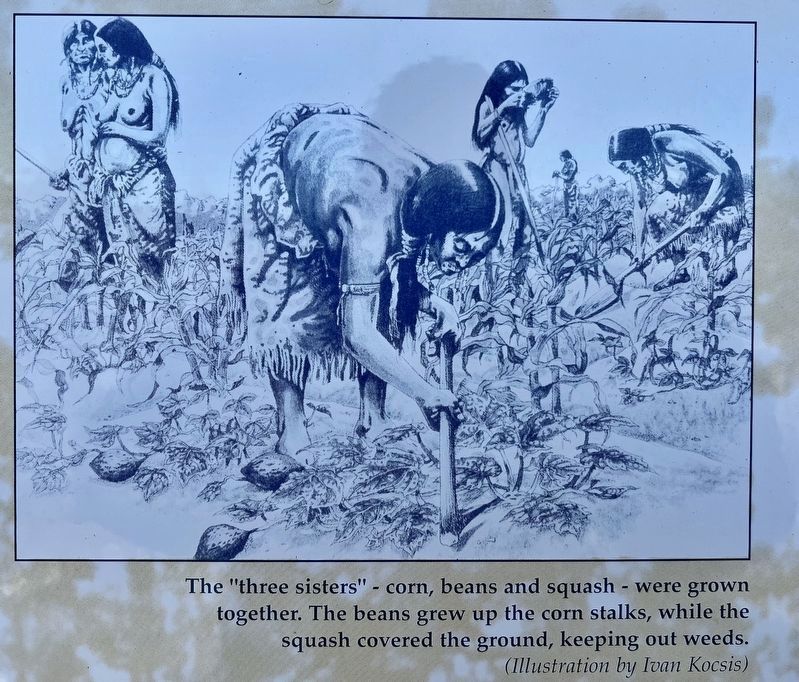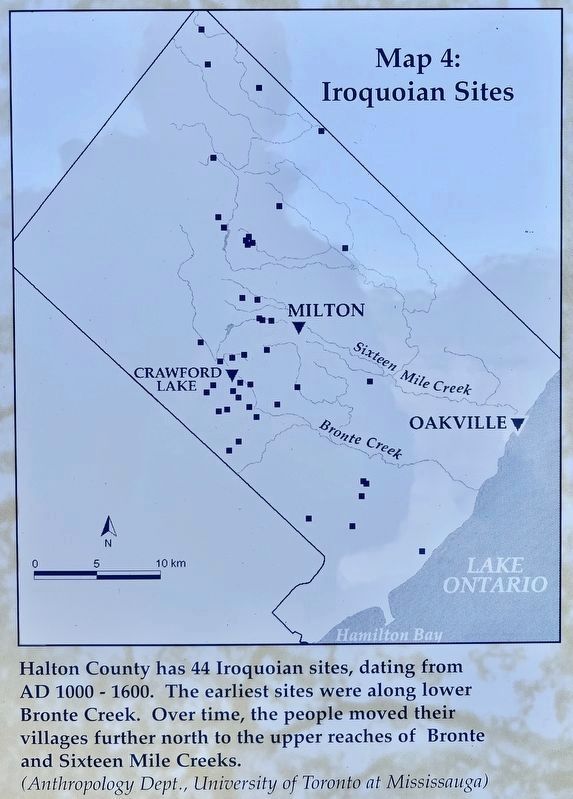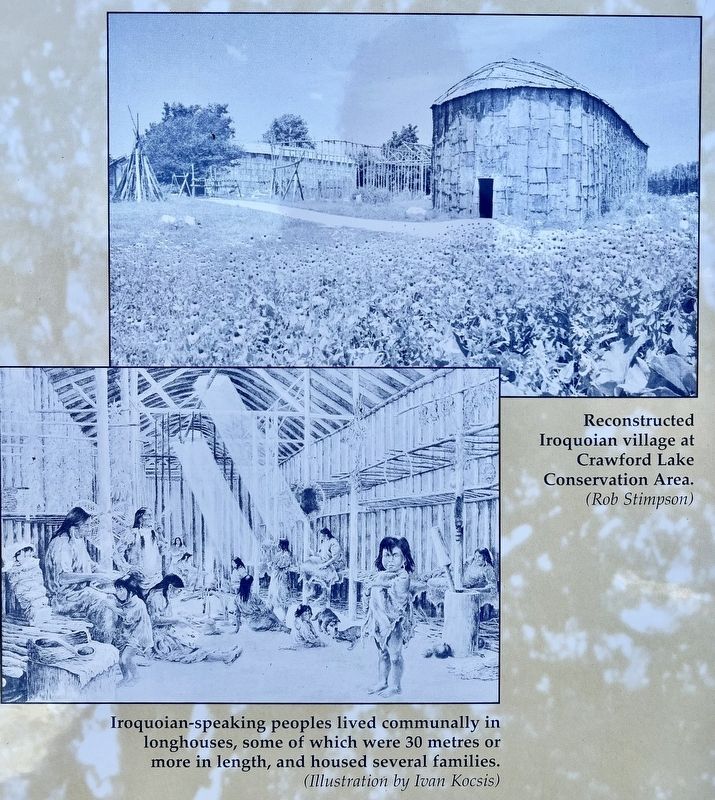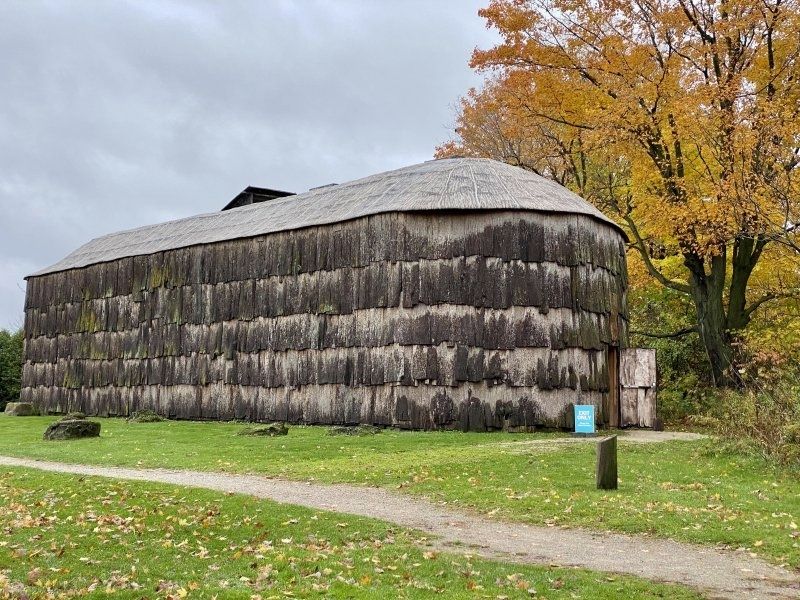Oakville in Halton Region, Ontario — Central Canada (North America)
The First Horticultural People (AD 500 to 1610)
First Nations
— Sixteen Mile Creek Trail —
Inscription.
In the Late Woodland period (AD 500-1000) people of the Princess Point Complex introduced corn into southern Ontario. Evidence of their culture has been found at Cootes Paradise in Hamilton and along the Credit River.
The Princess Point culture ultimately led to the Iroquoian-speaking people who lived in the area (AD 1000-1600) and whom French explorers encountered at the beginning of the 17th century.
These people settled on river flats where they could farm. Living in longhouse villages surrounded by palisades, they supplemented their crops of corn, beans and squash by hunting, fishing and trapping.
Erected by Town of Oakville.
Topics. This historical marker is listed in these topic lists: Agriculture • Anthropology & Archaeology • Native Americans.
Location. 43° 26.759′ N, 79° 40.245′ W. Marker is in Oakville, Ontario, in Halton Region. Marker is on Randall Street near Thomas Street, on the right when traveling west. Touch for map. Marker is at or near this postal address: 165 Randall Street, Oakville ON L6J 1P5, Canada. Touch for directions.
Other nearby markers. At least 8 other markers are within walking distance of this marker. The Treaty Period (1801-1847) (here, next to this marker); Hunter-Gatherer and Fisher People (9,000 BC to AD 500) (here, next to this marker); Early Contact Period (1610-1700) (here, next to this marker); Oakville’s Meeting Hall (about 180 meters away, measured in a direct line); Leading Citizens (about 210 meters away); Then and Now (about 210 meters away); Business on the “Main Street” (about 210 meters away); Lakeshore Road Taverns (about 210 meters away). Touch for a list and map of all markers in Oakville.
Also see . . . . Royal Ontario Museum - Homes of the Past: The Archaeology of an Iroquoian Longhouse
The Iroquoians were agriculturalists, or farmers. Corn or maize was the most important agricultural crop grown by the Iroquoians. Corn was domesticated in Mexico, and traded into southern Ontario by about 1000 AD.(Submitted on February 27, 2024, by Tim Boyd of Hamilton, Ontario.)
Credits. This page was last revised on February 28, 2024. It was originally submitted on February 27, 2024, by Tim Boyd of Hamilton, Ontario. This page has been viewed 36 times since then. Photos: 1, 2, 3, 4, 5, 6. submitted on February 27, 2024, by Tim Boyd of Hamilton, Ontario. • Andrew Ruppenstein was the editor who published this page.
